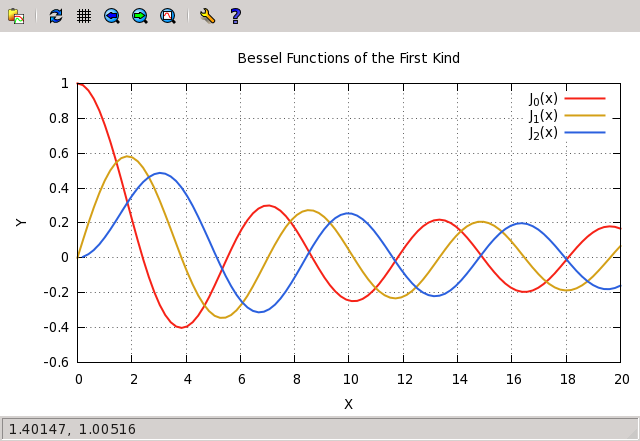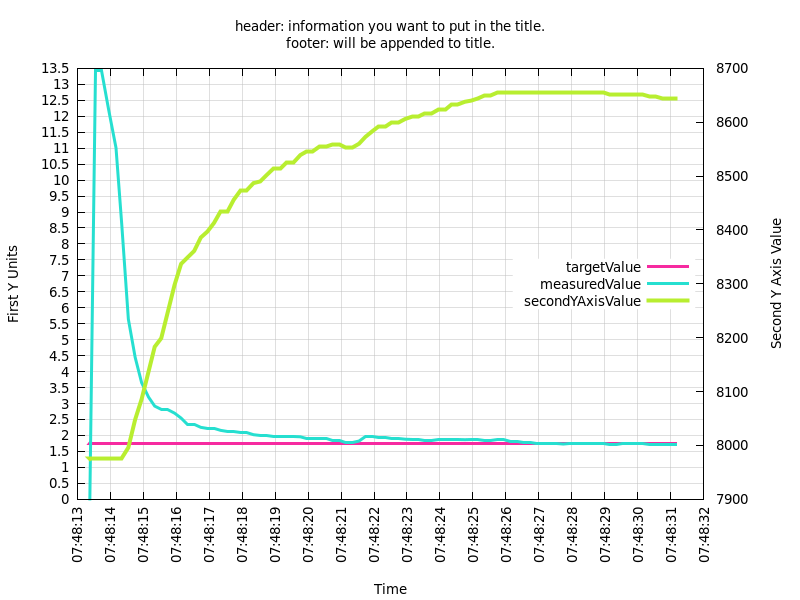

Here it is the same as with the label settings. Set label 1 'a' plot f( x) with lines ls 1īut the macros are not only useful for the different labels, but also for the other settings of the multiplot.įirst we want to remove the x/y-tics and labels, where they are not necessary. # Placement of the a,b,c,d labels in the graphs POS = "at graph 0.92,0.9 font ',8'"
GNUPLOT SET XTICS CODE
As you can see in the code block above, the set label command contains the same position for every graph. 2 A straightforward use of the multiplot command to plot four different functions ( code to produce this figure)īut before we fix this we will introduce the use of macros in order to shorten the code a lot. The xtics and the ytics are just the same in every graph and are not needed to be displayed on every graph.įig. As you can see this is not an ideal case to use the space in the figure. Using this simple approach we will get Fig. If we don’t do that, then on the last graph all four labels will be present. Note that we overwrite the label 1 for every graph. We also added a label to every graph in order to identify them easily in the figure. # - GRAPH a set label 1 'a' at graph 0.92, 0.9 font ',8' plot f( x) with lines ls 1 # - GRAPH b set label 1 'b' at graph 0.92, 0.9 font ',8' plot g( x) with lines ls 1 # - GRAPH c set label 1 'c' at graph 0.92, 0.9 font ',8' plot h( x) with lines ls 1 # - GRAPH d set label 1 'd' at graph 0.92, 0.9 font ',8' plot k( x) with lines ls 1 unset multiplot In a first attempt we just use the multiplot command: # Start multiplot (2x2 layout) set multiplot layout 2, 2 rowsfirst The functions are given by: # Functions (1/0 means not defined) a = 0.9 f( x) = abs( x) < 2 * pi ? a * sin( x) : 1 / 0 g( x) = abs( x) < 2 * pi ? a * sin( x + pi / 2) : 1 / 0 h( x) = abs( x) < 2 * pi ? a * sin( x + pi) : 1 / 0 k( x) = abs( x) < 2 * pi ? a * sin( x + 3.0 / 2 * pi) : 1 / 0įor an explanation of the used syntax to declare the functions have a look at the Defining piecewise functions article.

1 A multiplot with reduced axes labeling and nicely arranged graphs ( code to produce this figure) This and a solution to convert the lines to dashed versions is also mentioned in the plotting the world entry.įig. Especially the dashed line of the grid is not created in the right way, even though the dashed option is used for the terminal. The last thing I would like to mention is the problem, that the output of the svg terminal is slightly different from the pngcairo terminal.

1 and why we should do this:ġ) change the default colors to more pleasant ones and make the lines a little bit thicker set style line 1 lc rgb '#8b1a0e' pt 1 ps 1 lt 1 lw 2 # - red set style line 2 lc rgb '#5e9c36' pt 6 ps 1 lt 1 lw 2 # - greenĢ) put the border more to the background by applying it only on the left and bottom part and put it and the tics in gray set style line 11 lc rgb '#808080' lt 1 set border 3 back ls 11 set tics nomirrorģ) add a slight grid to make it easier to follow the exact position of the curves set style line 12 lc rgb '#808080' lt 0 lw 1 set grid back ls 12 In the following I will have a look at the things we have to do to reach Fig. 2 Default output of the pngcairo terminal ( code to produce this figure, data)


 0 kommentar(er)
0 kommentar(er)
